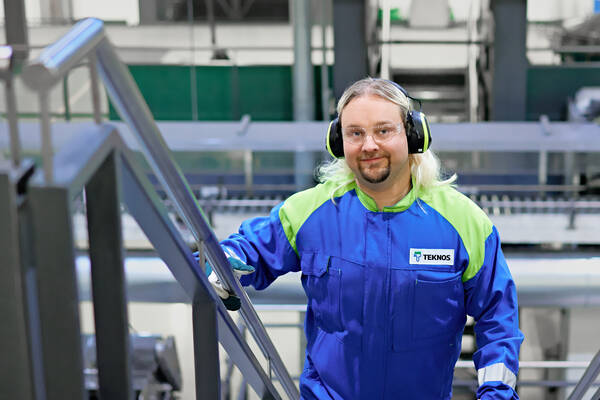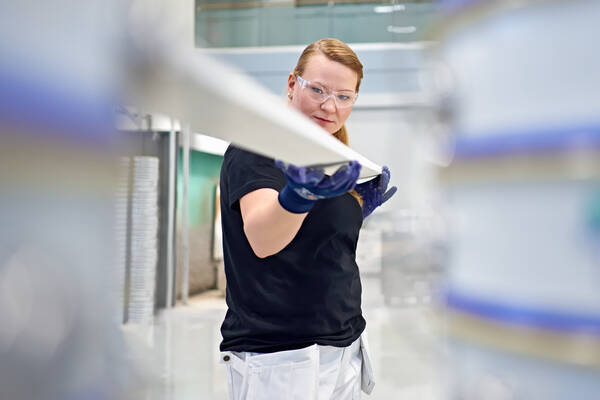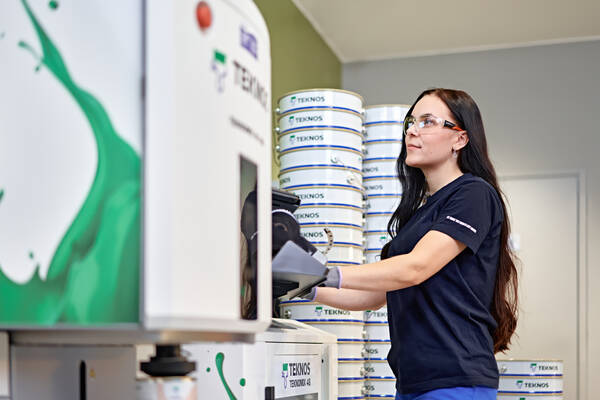
Industrial paint solutions for machine manufacturers
Are you struggling with rising costs and the pressure to be more sustainable? At Teknos, we understand exactly what you’re up against.
Here are the common challenges metal manufacturers face:
- “We need to cut costs without sacrificing quality.” The expense and downtime from frequent repaints and repairs are just not sustainable.
- “Sustainability is a must, but so is performance.” Balancing reducing environmental impact with maintaining high performance is a key challenge.
- “Our customers demand a high-gloss finish.” Meeting high aesthetic standards while ensuring durability is tough.
- “Our metal surfaces rust too quickly.” Corrosion is a constant challenge, affecting your maintenance budget and reducing the lifespan of your products.
These are the difficult realities you deal with every day. And they’re exactly the challenges we’re here to help you overcome.
>> Learn more about the benefits of direct-to-metal paint solutions and how they simplify your coating process.
Lower costs, high quality
Our premium paint offers superior coverage and durability, so you need fewer coats and less repainting. Here’s what that means for you:
- Less downtime for maintenance: Fewer coats mean fewer interruptions on your production line. Instead of stopping multiple times to apply and dry each layer, you keep your operations running smoothly.
- Savings on paint and labour costs: In many cases, our multi-functional paints can replace both the primer and topcoat, cutting your painting process from two or three steps to one. You’ll buy less paint, and your painters will spend less time applying and drying each layer.


Sustainability goals
Sustainability is a key part of what we do at Teknos. We can help you with your sustainability goals with paint technologies that are designed to lower VOC emissions. In many cases, we can also help improving your energy use.
Example from a customer: Cutting energy use by 90%
Take our innovative approach to paint hardening. By switching to a moisture curing process, one of our customers reduced their energy consumption by up to 90%.
| Method | Energy consumption |
| Traditional oven-hardening process | 200 kW/h |
| Our moisture-curing process | 20 kW/h |
Energy saved: 200 kW/h - 20 kW/h = 180 kW/h
That's a 90% reduction!
>> How to save energy costs in the painting process?
High-gloss finish
If your products demand a high-gloss finish and a consistent and professional appearance, we have just the solution for you. Our product portfolio includes different products designed to meet your specific needs.
We use advanced colour matching technology to ensure each component colour matches perfectly and is aligned with your brand's identity and visual appeal.
Our UV protection also helps prevent colours from fading so your products can look good for a long time.
Corrosion protection
Our paint is designed to withstand the toughest environments and meet your specific needs for protecting against corrosion.
We analyse the conditions where your machinery operates - such as humidity levels, temperature fluctuations, and exposure to chemicals.
>> Read more what you need to know about humidity?
Then we look at how your machines are used - whether they face physical wear and tear or come into contact with harsh chemicals.
Finally, we identify the types of corrosion that could affect your products. By understanding these factors, we can provide a paint solution that keep your machines protected and functioning.

Expertise across industries
We offer advanced paint solutions for the metal and machine manufacturing sector. We ensure durability and high performance across various industries: agriculture, construction, earthmoving, automotive – commercial vehicles and motors, railroad, mining and cranes.
We have worked with various leading machine manufacturers such as Caterpillar, Komatsu and many others.
What our customers think?
“The coating is easy to paint with and its gloss, hardness and appearance match those of a powder paint surface.”
"Repainting is not required, as the first spraying is a success. The quality of the paint surface is especially good."
Contact us today
Contact us to learn more about our industrial painting solutions and how we can help you achieve your goals.